monday.com
Impact
Series
The monday.com Impact Series, Part 4: Team Collaboration & Communication
Table of Contents:
In this post, our final part of the monday.com Impact Series, we consider how monday.com can facilitate easier team collaboration and eliminate communication barriers.
Collaboration and communication go hand-in-hand. Communication problems usually impair team collaboration and vice versa. Therefore, collaboration software focusing on improving communication across your entire business can make a huge impact on everyday collaboration and cooperation across teams.
Some 86% of executives attribute a lack of communication or collaboration to workplace failures, according to Salesforce. So clearly, supporting and improving collaboration is a fundamental aspect of any project or process management system.
Obstacles to Team Collaboration
Collaboration within a department and with other departments faces many hurdles. Some collaboration barriers result from overall poor management practices, while others result from interpersonal issues or competing priorities.
In many cases, it's simply a lack of utilizing the right platform to make it easy (and even fun) to work together.
Here are a few of the obstacles organizations of all sizes often face when it comes to collaboration:
- Communication Barriers. If you're wondering just how important communication is for successful collaboration, consider Slack's report entitled “Good collaboration, bad collaboration.“ The report noted that workers in the U.S., the U.K., and France found communication to be the hardest part of effective collaboration. If teams cannot communicate easily or communication takes too long, their collaborative efforts will inevitably suffer.
- Unequal Productivity and Initiative. Some team members may be more proactive, while others may need a little nudge in the right direction to get things done. When you create teams with varying productivity levels, timelines can get skewed, especially when the project has dependencies across teams or departments.
- Too Many Tools. A Gartner survey found that the use of collaboration software has increased by 44% since 2019. Cross-department collaboration may result in the need to use various tools to get specific tasks done. However, if there are too many tools to use, that may result in additional challenges like duplicate data entry and loss of productivity. Team members may spend way too much time jumping from one tool to another. Some may not even have the training for all the tools, leading to expensive mistakes and wasted time.
- Organizational Silos. Other obstacles to collaboration are organizational silos that operate independently and don't want to share information readily. As a result, teams cannot work together properly.

How Does monday.com Help with Collaboration & Communication?
It's clear that in order to succeed as a business, you need collaboration software that facilitates open communication and information sharing.
But you need more than just a collaboration tool. Otherwise, your employees will find their day split up yet again, chasing information in a separate communication platform and then bringing that information back into their daily task tool.
Back and forth, back and forth. Not a productive way to work.
What if you could have team collaboration and communication happen right inside of the same platform where daily work happens?
What if that platform also allowed managers to oversee and chime in on collaborative communication when needed?
The monday.com platform can do that.
Here's how monday.com drives functional and cross-functional collaboration for organizational success:
A Single Collaboration Platform
The monday.com Work OS combines many features and tools necessary for collaboration, both within the same departments and between different departments. While at its heart it is workflow management software, monday is also hands-on collaboration software.
The main advantage of utilizing monday.com for project collaboration and management is eliminating the need to use different platforms. This effectively resolves most of the communication barriers between collaborating team members and their leadership.
It has communication and information sharing built into it. At the same time, monday.com also allows you to customize the boards and dashboards in the ways your project and team need. This customization lets you consider the different roles each team member plays in collaboration and adjust the platform according to what suits everyone best.
Here are a few more reasons why using monday.com as your centralized collaboration software platform can have a dramatic impact on your business:
- All stakeholders are on the same page with the same information (or as our CEO Deb Cinkus likes to put it: "everyone on the same page, of the same book, in the same library")
- Managers can oversee progress easily and facilitate communication whenever necessary.
- The ease of communicating about your projects and tasks in one dedicated platform vs. in email, text, phone and chat tools like Slack will save a considerable amount of time for team members and managers alike.
- monday.com is easy to use with minimal training for new team members.
Collaborative Whiteboard Widgets
One of the basic features of monday.com for collaboration is the whiteboard widget. Whiteboards are where ideas are formed through brainstorming. Sharing ideas and feedback is vital for any productive collaboration. Or you can always use the seamlessly embedded Miro board views if Miro is your whiteboarding tool of choice.
There's also new whiteboarding and process mapping product coming out in 2022 called Canvas that works with the monday Work OS. We'll cover Canvas in a future blog post once it's out of beta.
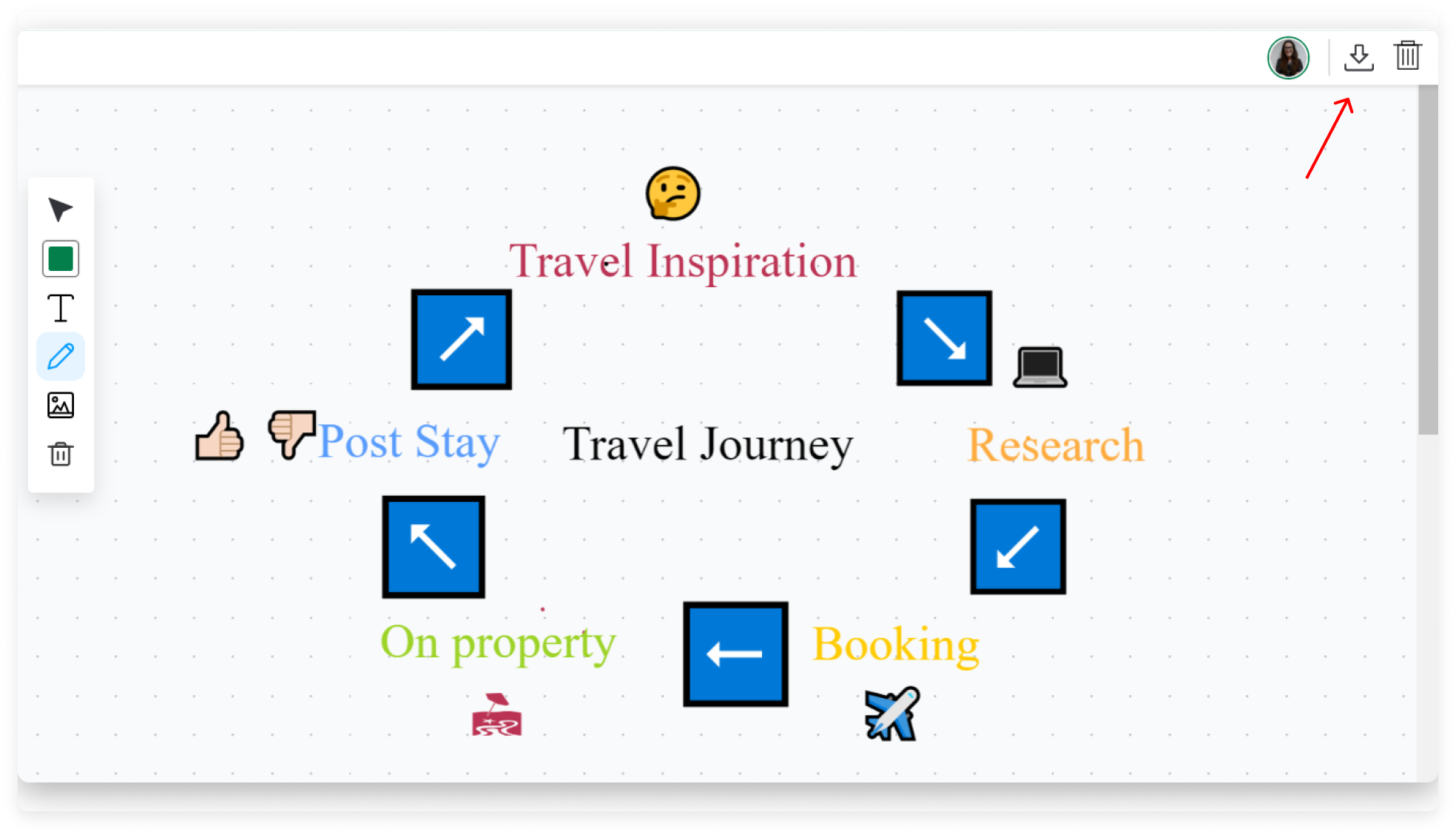
monday.com Workdocs
Did you know that employees spend an average of over 5 hours per week waiting for information? monday.com saves this time by embedding needed documents right inside your Work OS.
Collaboration extends to the documents your teams are working with, which is why collaboration in documents is equally important as project tool collaboration. And here's where monday.com excels. It provides embedded, fully connected documents called Workdocs for teams to collaborate and manage their work.
Workdocs can be version-controlled and accessed by different team members. So rather than editing a separate file, sending it by email to another team member, and then receiving comments and feedback to update the file, teams can do all of that seamlessly in a monday Workdoc.
With built-in collaborative documentation, the speed of editing documents also improves. In addition, there's no need to email the document or send it over a local server or shared drive. Instead, team members can access the most up-to-date information right inside of their monday․com Workdoc.
This feature is also useful when working with someone who isn't part of the department, such as someone from another functional area or an outside vendor, client or contractor.
monday.com allows unlimited Guest access on both the Pro and the Enterprise plans, which means Guests can also use the platform to view and even edit documents in real-time.
Integration with External Applications
Remember how we said using too many different apps to collaborate can be an obstacle to true productivity? monday.com eliminates this problem with its wide range of third-party platforms and app integrations.
Whether you use Dropbox, Sharepoint or Google Drive for sharing files or Zoom for video conferences, monday.com integrates seamlessly with many of your favorite collaboration tools.
In addition, there is the Apps Marketplace, where monday․com users can easily find and install integration apps to take team collaboration to the next level.
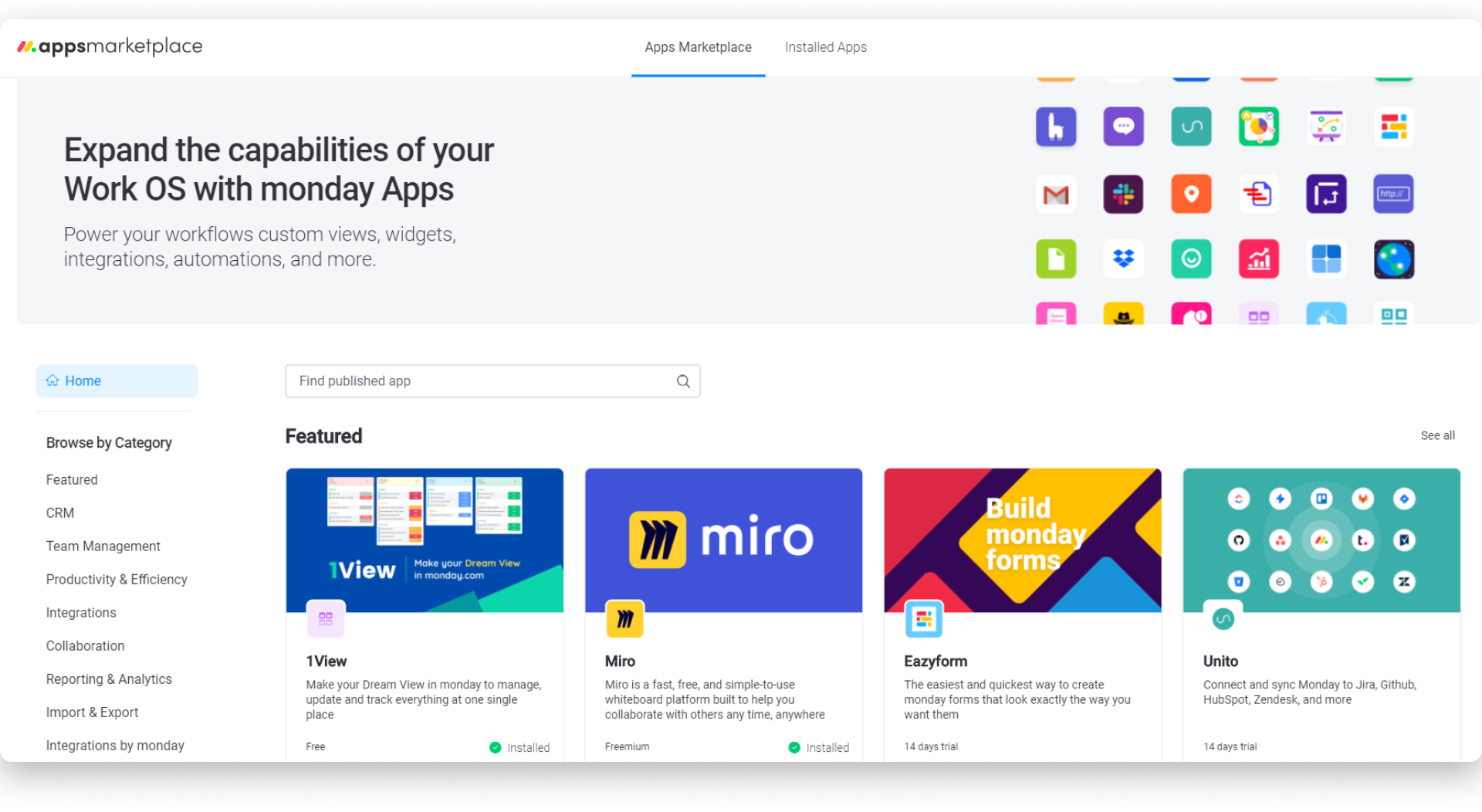
Workload Management
Workload management is all about workload planning, forecasting and delegation. However, it's vital for successful collaboration as well. Why?
Effective collaboration is often marred by uneven work distribution or uneven speed with which various teams or team members are working. This creates a workload imbalance that gets in the way of successful projects and streamlined processes.
The monday․com Workload widget helps team leaders leading the collaborative effort can assign and distribute tasks according to team members' skills, experience, and wants.
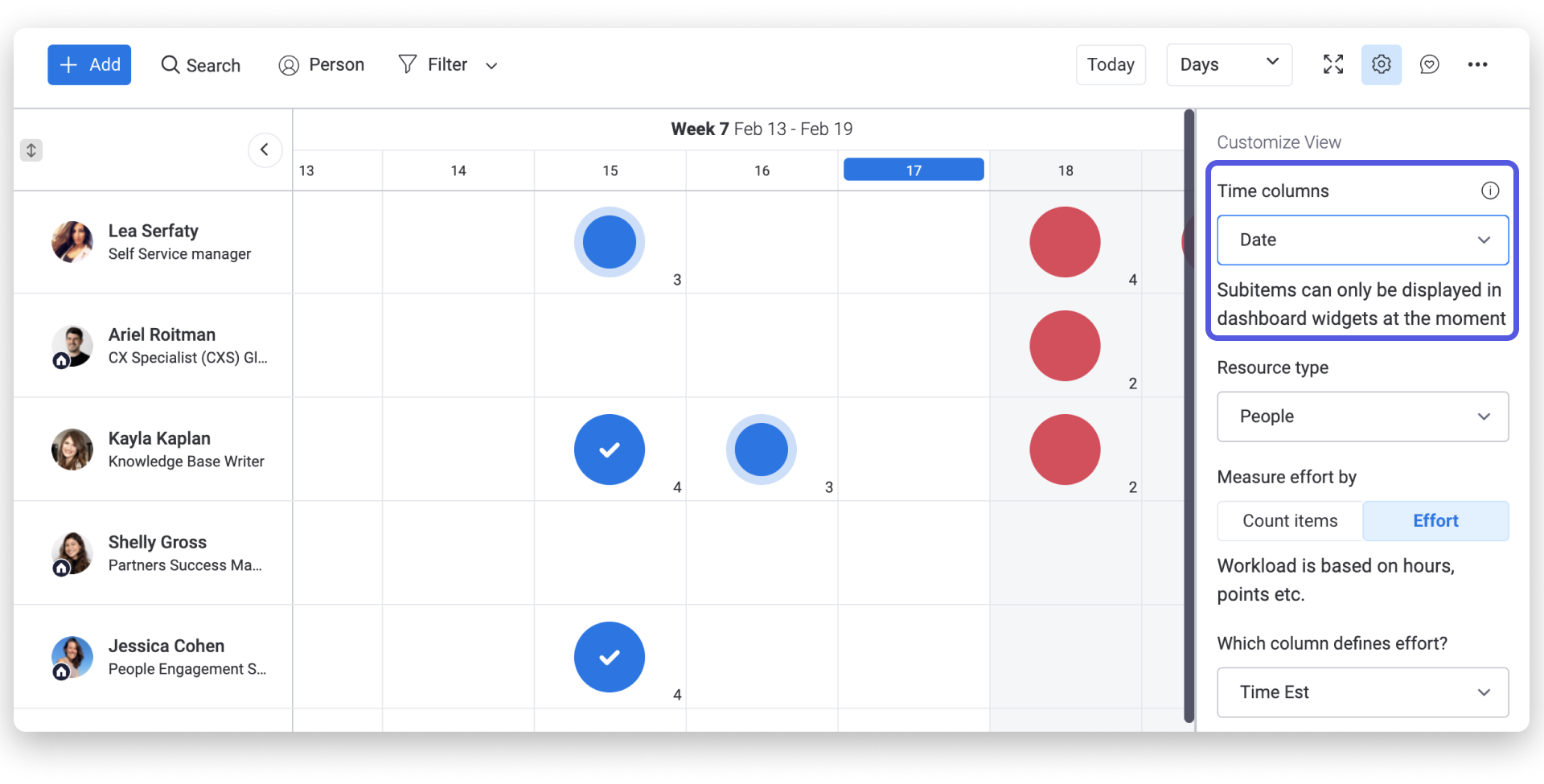
With the workload across resources optimized, it becomes easier for leaders to delegate tasks without assigning the same task to multiple people unless required. Similarly, they can better manage workflow if certain team members are unavailable or overbooked.
Simply put: Better workload management is critical for collaboration between functional and cross-functional teams.
Track Progress with Dashboards
With dashboard widgets, managers and leaders can better keep track of the work across departments and teams, helping them step in when needed to boost team communication (and relax when things are on track).
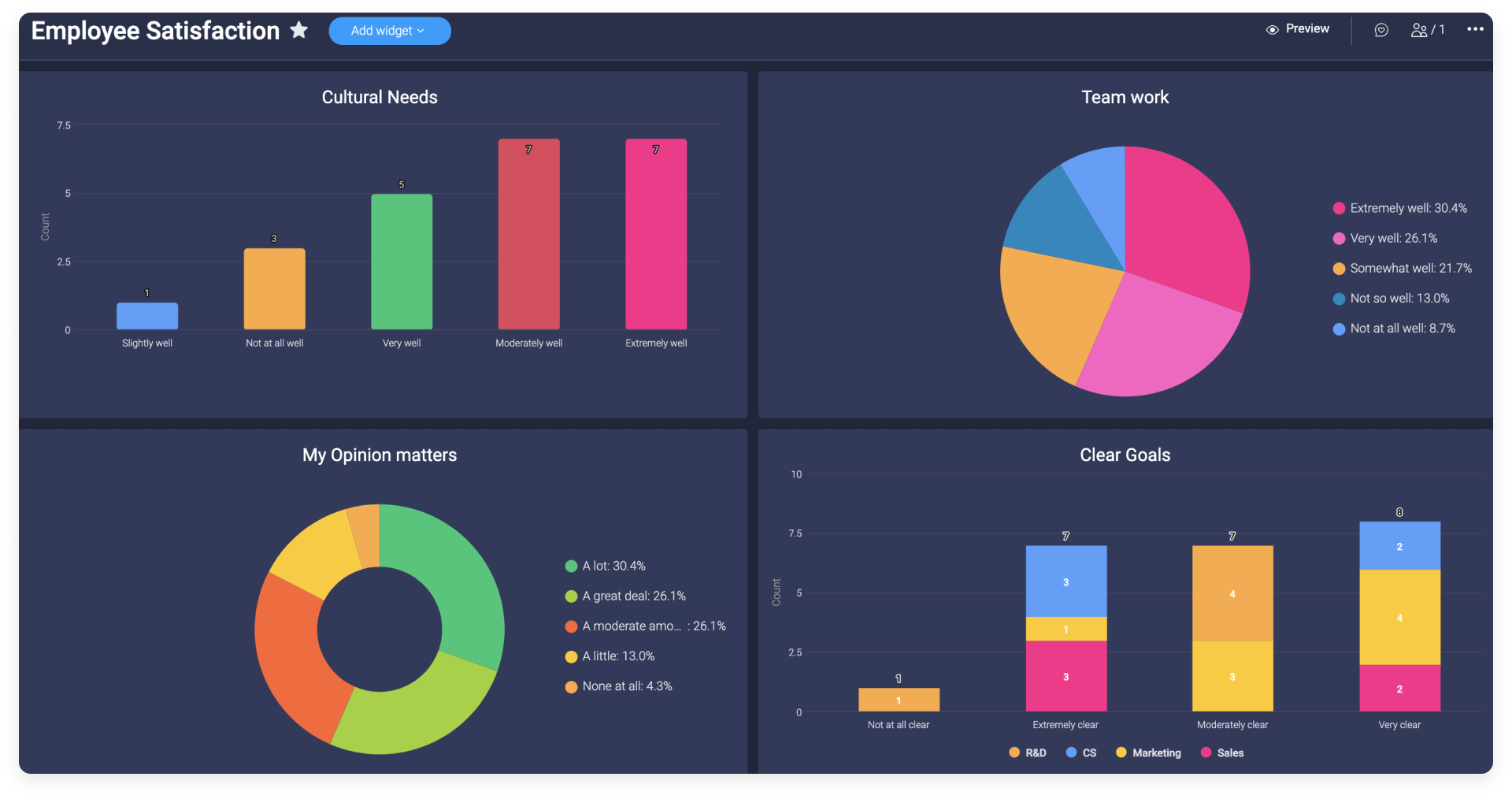
Conflicts are not uncommon when different people, especially from different departments, are collaborating on a project. With more effective oversight of the project, managers can resolve conflicts and progress delays before they become bigger challenges.
Not every team member may feel comfortable approaching another departmental manager to resolve cross-functional collaboration issues, so managers overseeing such projects need to be more proactive and hands-on. With monday's real-time Dashboards, managers can quickly identify progress bottlenecks with customizable data visualizations and charts.
Private Boards
The private board feature of Pro and Enterprise monday.com plans is great for running those projects on which only select people are working. This not only enhances the security and privacy of the project but also removes unnecessary distractions for other team members.
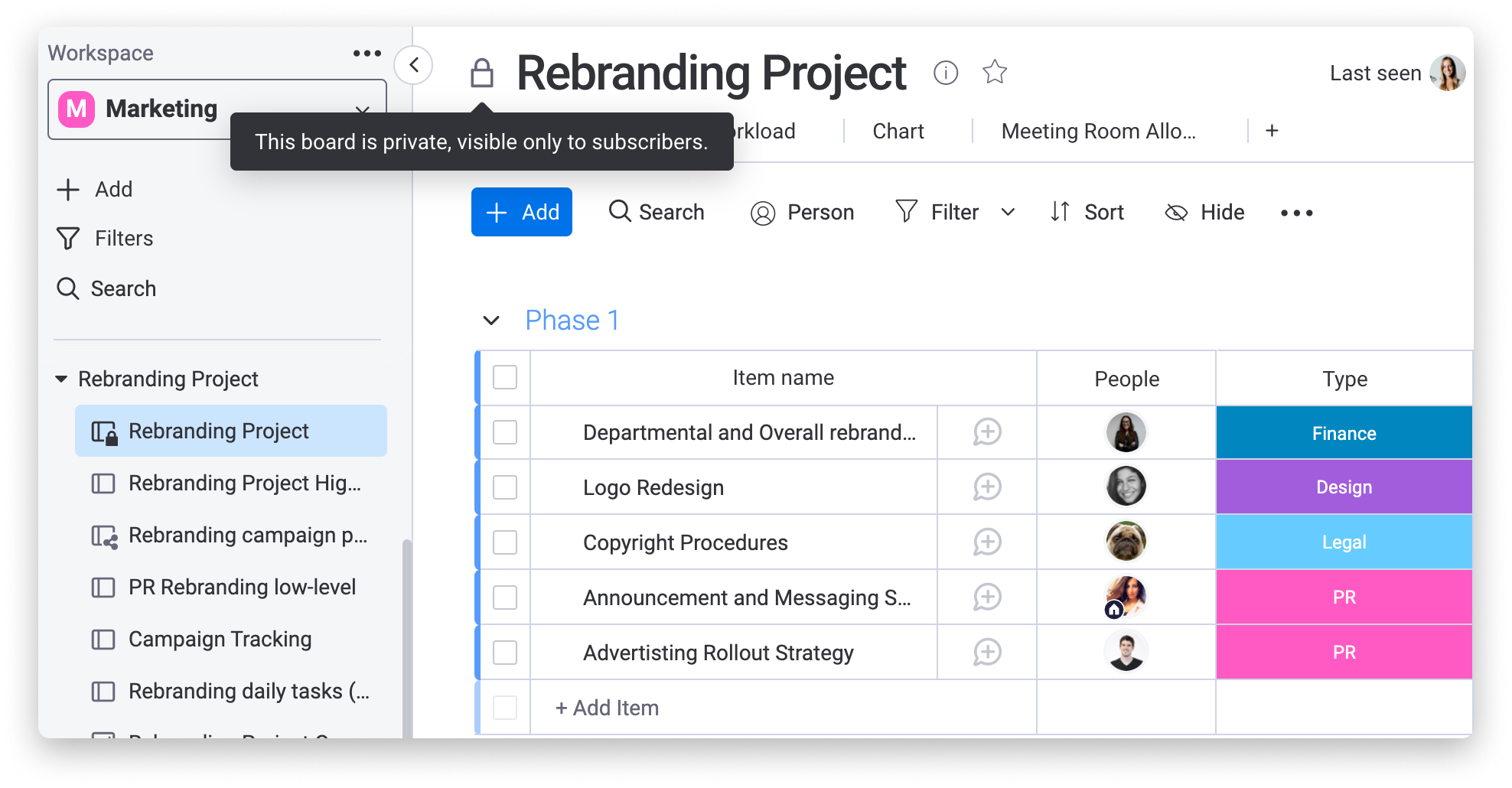
Private boards are great for companies that want to keep strategic projects under wraps until finalized.
Private boards work just like normal boards, and you can choose from a wide range of monday.com templates for inspiration (200+). Only those you invite to a private board can see them and work on them, even if you have many other organizational members using the monday.com Work OS.
Ready to Boost Your Team's Collaboration?
This is the final installment of our monday.com Impact Series, where we explore how the monday.com Work OS provides powerful ways to improve resource management, productivity, employee accountability, and team collaboration.
As always, monday.com leverages transparency throughout the entire platform to make team collaboration effective and exciting. In today's hybrid and remote working environment, businesses realize more than ever the importance of team communication and are investing in the right collaboration software.
Still not sure if you're ready to join the other 150,000+ companies worldwide using the monday.com Work OS?
Contact Polished Geek for an extended free trial of the monday.com Work OS and discover it for yourself.
When you start your monday.com trial through us, you'll also receive a no-obligation, tell-it-like-it-is Question & Answer session with one of our certified monday.com consultants. We'll help you decide if monday is right for you.
In our special monday.com Impact Series, we dig deep into four fundamental ways that the monday Work OS positively impacts organizations of all shapes and sizes.
- Part One: Resource Management
- Part Two: Team Productivity
- Part Three: Accountability & Employee Engagement
- Part Four (this post): Team Collaboration & Communication